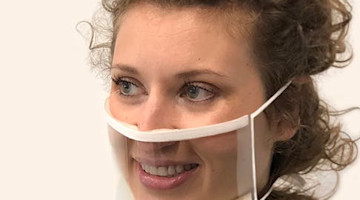According to MarketWatch, projected global additive manufacturing (AM) market growth is expected to reach $36.6 billion by 2027, a number that was just $8.4 billion in 2018. There’s clearly plenty of enthusiasm and demand for AM machines, materials, and products utilizing this technology today – and tomorrow. So why, then, are so many businesses employing AM processes struggling to make a profit?
The allure of AM has always been its potential to transform the entire manufacturing process as a disruptive powerhouse with promises of lower costs and improved product performance and quality. However, it can only achieve such lofty goals with an understanding that comes from the deep analysis of every stage of the AM process.
Businesses which choose to utilize an AM process for their product have had to endure a constant “noise” associated with this highly touted technology. My experience with clients has shown a penchant for buying into myths and hyperbole regarding the use of AM.
Myth #1: AM is for every company and every product.
AM is not for every company. Many successful companies have deeply rooted, traditional manufacturing processes. Change is not easy or inexpensive, and it takes a special culture to be open-minded and flexible enough to adopt AM. Myth #2: Material costs are how you control your expenses. In actuality, material costs for a project are less than 5%. Understanding what material best suits a process in AM – as opposed to traditional manufacturing – is critical. In some cases, aluminum is not especially practical in AM – not because of cost but because of dynamics associated with AM. Titanium can actually perform much better.
Myth #3: If you buy it, they will come. There is a preconceived notion that you can do anything with AM, but transforming the theoretical to a practical purpose is very difficult. It begins with a new way of thinking. If a line of customers simply formed as soon as you purchased a machine, there would be significantly more companies using AM.
The hard truth is that a traditional approach to manufacturing does not work for AM. There needs to be a balance between analytical and creative thought. From a design engineering standpoint, a traditional approach is a hindrance to seeing the AM process capabilities and what it takes to develop an effective process. A successful approach to AM design engineering requires the collaboration of an entire team.
Talk to a service provider From my perspective, the best way to get started is to go directly to the source. Talk to the right service provider or talk to a vetted parts manufacturer that utilizes AM machines. They have a hands-on understanding that is better than anyone else. Seek out service providers who offer different technologies.
Your IP Understanding your intellectual property (IP) is a consequential differentiator between companies with highly adaptive cultures and those that are more conservative. What do you think is patentable, and how close do you think you need to hold that to your chest? Discussing or developing an AM process for something you may not be willing to divulge completely may be difficult, if not impossible. Finding someone to trust means moving ahead confidently and effectively.
Beware of the bias AM machine providers are in a highly competitive arena. With massive price tags for a single machine, industrial gauge units can easily exceed $1 million and reach as high as $3.5 million. These providers are doing an excellent job of educating their potential customers and explaining complex processes and capabilities down to the printer head, but their interactions eventually come back to recommending the customer buy their machine.
You have to recognize the source of your information. If you do not find an unbiased consultant to help you make key decisions along the way, you could end up moving down a path that’s perfect for the provider but not for the development of your product.
About the Author: Bill Herman is the President of Cincinnati-based New Era Assessments, LLC. In addition to a quality and test engineering background in traditional manufacturing, Bill has extensive experience in the additive manufacturing/3D printing industry, specializing in additive development and lean manufacturing for aerospace, medical, automotive and energy sectors. New Era Assessments, LLC is an additive manufacturing/3D printing assessment firm specializing in innovative, comprehensive additive manufacturing consulting—providing expert insights in design engineering, education, prototype parts development, production and parts development.






